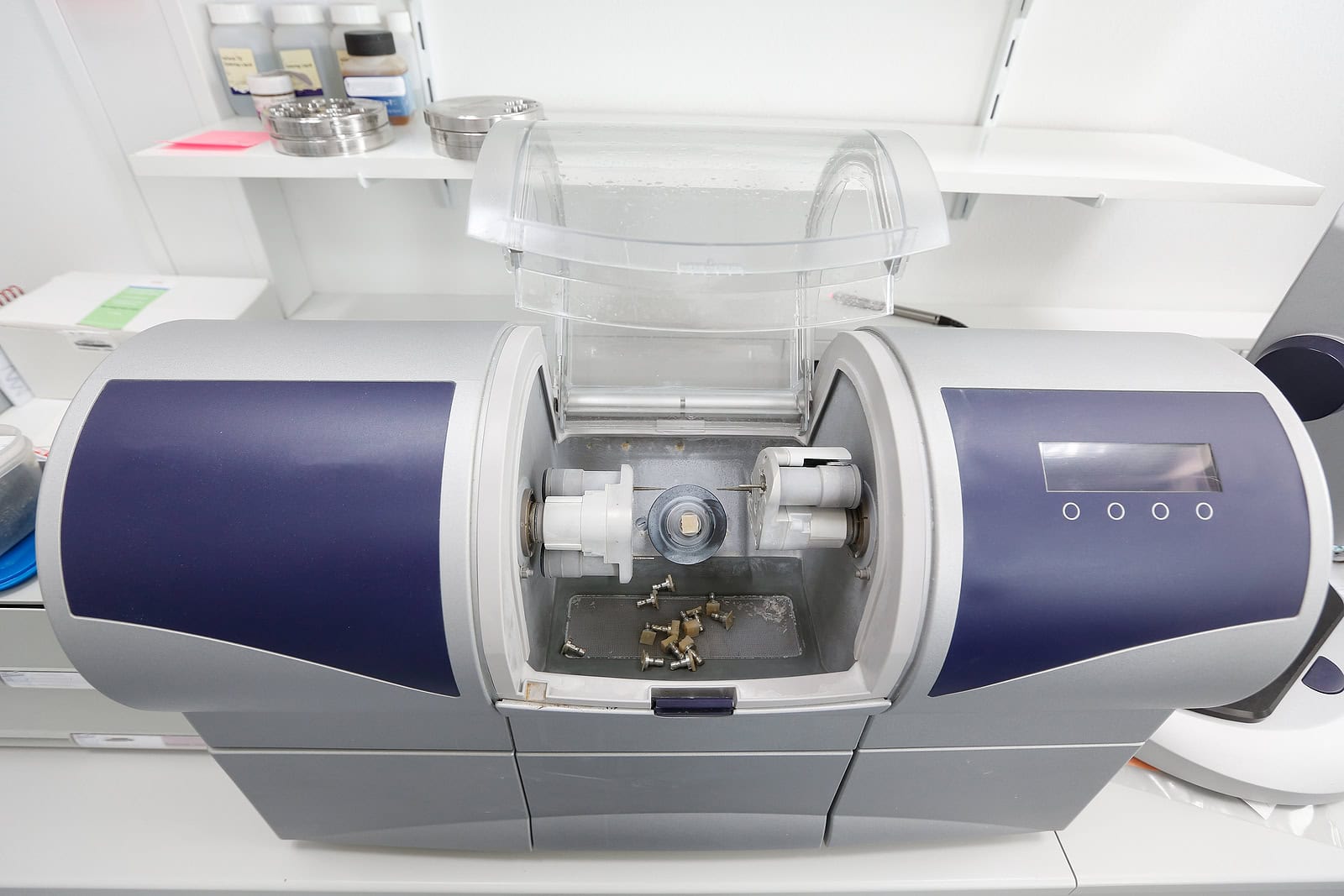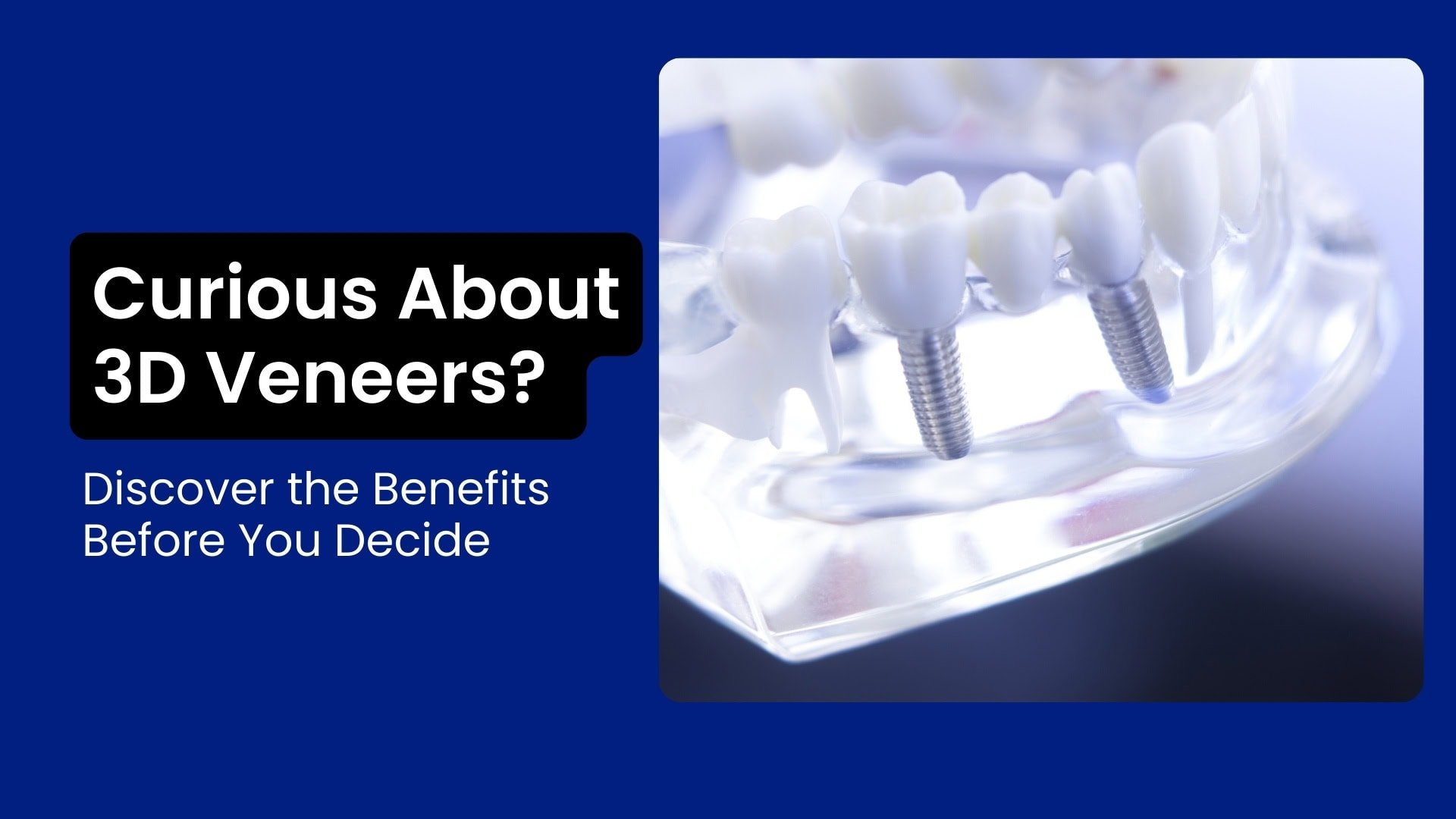What are 3D Printed Dental Veneers?
The epitome of cosmetic dentistry is 3D-printed veneers that combine cutting-edge digital tech with dental aesthetics. The thin, shell-like veneers are made to exact specifications and are designed to cover teeth in the front and instantly make smiles shine by concealing stains, chips, gaps, or unevenness.
Unlike traditional veneers that are heavily reliant on manual design and fabrications, 3D printing veneers use computer-aided design and manufacture to create exact and customized dental improvements with stunning accuracy and speed.
The dental boom that has occurred with 3d printing has revolutionized how we perform cosmetic dentistry. It has also reduced chair time and human error by manufacturing and customizing veneers with 3d printing.
The Role of 3D Printing in Modern Dentistry
How is 3D printing used in dentistry?
3D printing usage in dentistry extends far beyond veneers. This advanced technology has infiltrated other aspects of dental care and has developed a digital workflow that is more accurate, efficient and patient-friendly.
Current dental care is increasingly using 3D printing for:
- Models for diagnosis: Replicating with precision a patient’s oral structures
- Surgical guides: Enabling exact implant positioning
- Orthodontic Aligners: Making individualized clear aligners for teeth alignment
- Crowns and bridges: Making precisely fitting veneers and implants
- Dentures: Making complete and partial dentures with optimal fit
- Nightguards and splints: Developing protection gear with optimal comfort
3D printing has also enhanced workflows in dentistry. Digital impressions are used to avoid using uncomfortable traditional molding materials and computer-designed software to make it possible to design a smile prior to even manufacturing. This provides a less uncomfortable patient experience and predictable results.
How 3D Printing is Revolutionizing Veneers
The conventional veneer procedure often involves several visits, physical impressions with putties or putty-like materials, and a waiting period while a third party creates the final product off-site. 3D printing veneers have changed this experience in really amazing ways.
| Traditional Veneers | 3D Printed Veneers |
| Multiple appointments required | Fewer appointments needed |
| Physical impressions with messy materials | Digital scanning with intraoral cameras |
| Manual design with potential for human error | Computer-aided design with precise control |
| Lab fabrication taking 1-2 weeks | Same-day or significantly faster fabrication |
| Limited patient involvement in the design | Digital smile preview and patient input |
| More tooth reduction is often necessary | Potentially more conservative preparation |
The revolution is not only in speed and convenience but also in the unparalleled degree of customization. Dentists are now able to make adjustments to designs with great accuracy digitally and alter shape, size, and color to provide truly personalized outcomes.
The Procedure: From Scan to Smile

The journey to 3D printing dental veneers follows a streamlined digital workflow:
Dentists’ evaluation: Your dentist assesses your oral condition, discusses your wishes, and makes a decision on whether veneers are right for your situation.
- Intraoral Scanning: Instead of traditional putty impressions, an intraoral scanner captures detailed 3D images of your teeth and tissues.
- Digital smile design: Using advanced software, your dentist plans your smile with consideration for facial structures, lip lines, and surrounding teeth.
- Virtual preview: You see a computer preview of your future results, allowing you to make changes prior to fabrication.
- Light tooth shaping: If necessary, there is minimal enamel reduction to create room for veneer accommodation.
- 3D printing: The designed veneers are then sent to a 3D printer that prints your veneers layer by layer with biocompatible dental resins or ceramics.
- Bonding: Finally, your veneers are bonded to your prepared teeth with special adhesives, and your smile is transformed instantly.
Final adjustments: Any necessary fine-tuning assures optimal bite function and comfort.
“Because my dentist was able to reveal to me digitally what my smile would look like with veneers, I was hooked on 3D printed veneers,” said a recent patient, Sarah. “The whole thing was really faster than I thought it would be, and it looks completely natural. I haven’t quit smiling!”
Advantages of 3D Printed Veneers Over Traditional Methods
The benefits of 3D veneers are not only the digital workflow:
Increased Precision Computer-aided design and manufacturing eliminates a great deal of the same variables that might affect traditional veneer manufacturing to provide stunning accuracy of fit and finish.
- Time efficiency Procedures that last for a week are now done in several days or even a single visit, depending on what is used.
- Conservative Approach Less invasion by the precision of 3D printing is frequently achievable and saves more of your natural tooth.
- Uniform Quality Computer-controlled manufacturing ensures that each veneer has consistent thickness and material properties.
- Greater Strength: Depending on the material, veneers that are 3D printed can offer excellent chipping and fracture resistance and great strength.
- Cost Effectiveness While initial expenditure can rival traditional veneers, reduced chair time and the potential for same-day delivery can provide total worth.
Are 3D Printed Veneers Right for You?
3D printing dental veneers offer solutions for various cosmetic concerns:
- Stained or yellow teeth: While whitening treatments do not address heavily stained teeth instantly and forever, veneers do.
- Enamel Loss: In people with no enamel, veneers restore the look and provide coverage for existing dental structures.
- Chipped/cracked teeth: Chipping and cracked teeth are instantly restored to normal or even better.
- Gaps and spaces: Spaces or gaps are corrected or spacing problems that are accommodated without using braces or aligners.
- Irregular size or shape teeth: Irregular size or shape teeth can be reshaped to restore symmetry to your smile.
But veneers are not ideal for everybody. Suitable individuals are those who:
- Good oral general health
- Sufficient healthy enamel for bonding
- Pragmatic outcome expectations
- Commitment to oral health
It is advisable to see a skilled cosmetic dentist for a detailed consultation to determine whether 3D-printed veneers are best for your specific condition.
Why Elegant Edge Dentistry is Your Best Choice for Porcelain Veneers in Rochester Hills
At Elegant Edge Dentistry, we’re proud to offer state-of-the-art porcelain veneers in Rochester Hills using the latest 3D printing technology. With our dedication to digital dentistry, you can be confident that you will receive the highest quality of treatment with exceptional results.
Take That First Step toward That Fresh Smile
Are you ready to discover how veneers created with 3D printing can make your smile and you more confident? Schedule your consultation with Elegant Edge Dentistry today. During this consultation, we’ll discuss what you’re hoping to achieve, evaluate your oral health, and discuss whether you’re a good candidate for 3D-printed veneers.
Don’t wait for that smile you’ve been imagining. Come to our Rochester Hills office to book your appointment and begin your quest for a more confident you. That new smile is just a scan away.
Call us or visit our website to schedule your consultation today.
